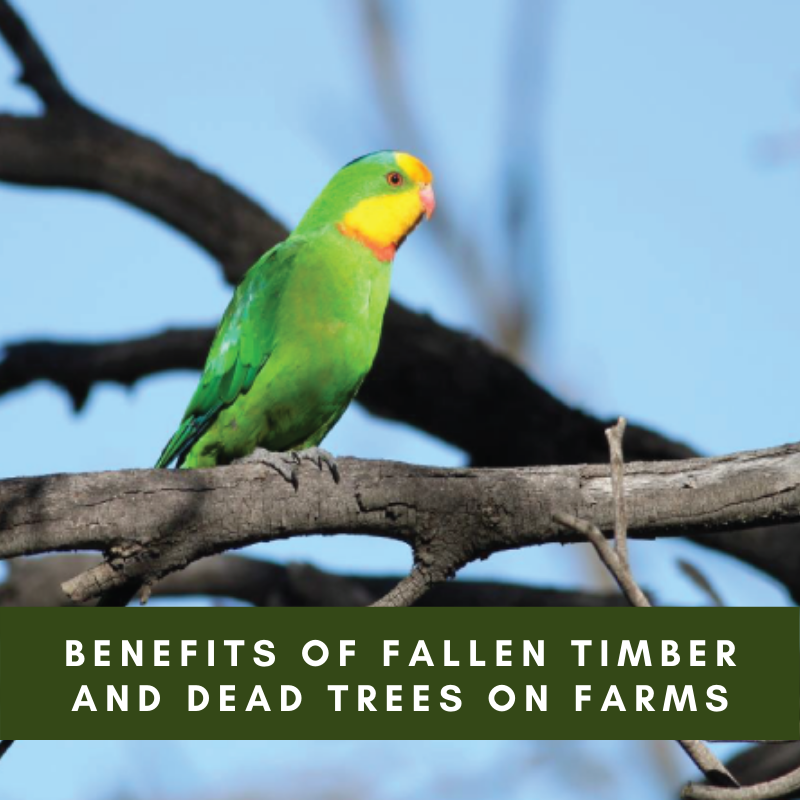Especially in winter, It may be tempting to use fallen timber for burning and to ‘clean up’ the understory but it serves essential ecosystem functions. Fallen timber stabilises soil, reduces erosion, and creates a protected microclimate where small animals can thrive, nutrients collect, and seedlings can gain a foothold protected from grazing and the elements.
What about Fire Risk?
Not all fallen timber increases fire risk. Larger branches, logs and fallen trees do not easily ignite and, once ignited, don’t contribute significantly to the spread of fire. In contrast, fine fuels contribute the most to fire spread, intensity and severity, and are the target of fuel reduction burns.
Is it worth saving dead/burnt large trees? Absolutely!
More than 300 native vertebrate species use tree hollows to survive and it can take a century or more for hollows to develop in woodland trees, so it is extremely important to retain and protect large old trees, including paddock trees, in the landscape.
After fire or drought, trees may appear dead but regrowth can occur many months later – often not until after rain. Even young fire-affected plantings may re-sprout, and fallen trees can continue to regrow if not completely severed. If possible, exclude livestock from regenerating areas to support vegetation regrowth.
To read more click here!

